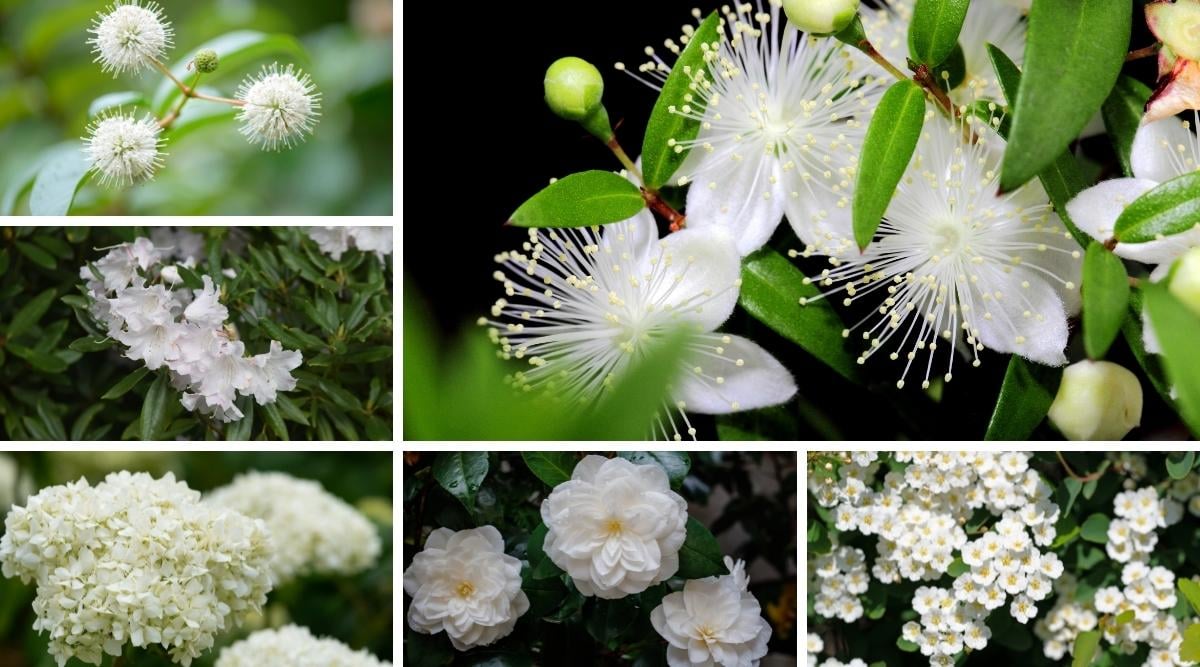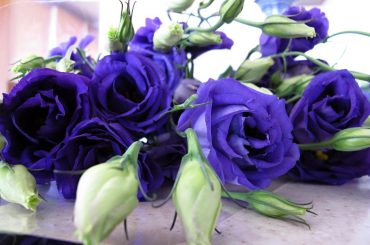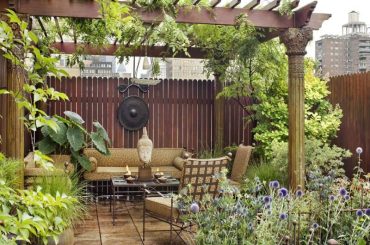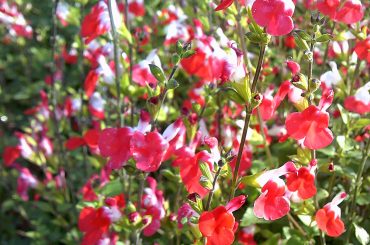Table of Contents
We love adding colour to our gardens and lawns to make them look vibrant and beautiful. Whereas each colour has its own stunning quality, there is nothing as tranquil as small white flowers. White flowers look classy, peaceful, and elegant. The best thing about small white flowers is they usually have a lovely aroma, which creates a natural atmosphere everywhere. They can be added to your landscape in pots, hedges, or boundaries, and they will never fail to amaze you with their beauty.
If you are a fan of white theme gardens and thinking about adding some to yours, we got you covered. There are numerous varieties of shrubs with white blooms that can elevate the look of your garden. They come in all kinds of foliage and flowers, with each carrying their distinct characteristics and identity.
White Flowering Shrubs to Add Serenity to Your Garden
1. Mock Orange
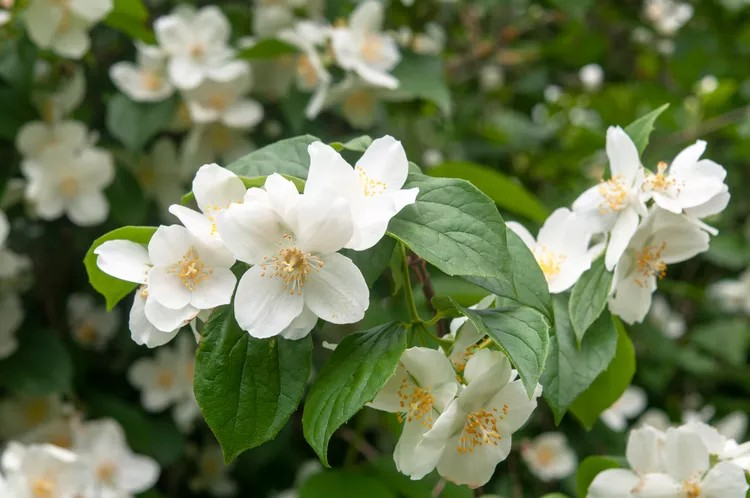
Mock oranges have beautiful white 4 petals flowers, accompanied by a mild sweet citrusy smell that does not overpower your senses but feels just right. This plant is very easy to grow and can reach up to 10 to 12 feet in height and almost equal in width.
Pro Tip: Mock orange shrubs grow fast. Hence you need to prune them regularly to keep their shape. Plant them in an area that gets full sun to partial shade for healthy growth.
2. Button Bush
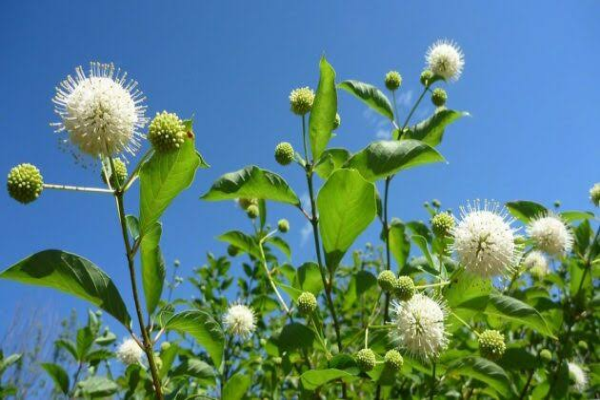
Button Bush is also called honey balls; it has round clusters of small white flowers with long stamens, which makes the cluster look fuzzy. It has dark green leaves, which are marked with deep veins.
Pro Tip: This plant loves water, so plant it in a wet area, and it will grow without assistance. Just prune it sometimes to keep it tidy. Please note that this plant is toxic to humans and pets.
3. Virginia Sweetspire
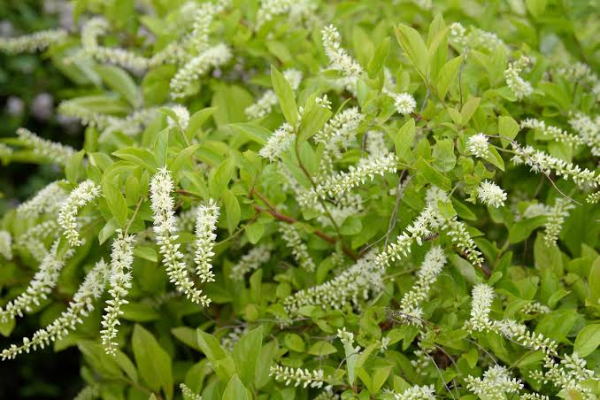
Virginia sweetspire is a very attractive plant with narrow, bottlebrush spikes of tiny flowers. It is a deciduous shrub that grows low on the ground. Its arched branches look visually appealing and are adorned with oval leaves that turn red during fall.
Pro Tip: It prefers loamy, moist soil, which is acidic. Water it twice a week until it is established, and then water it only during dry spells.
4. Summersweet
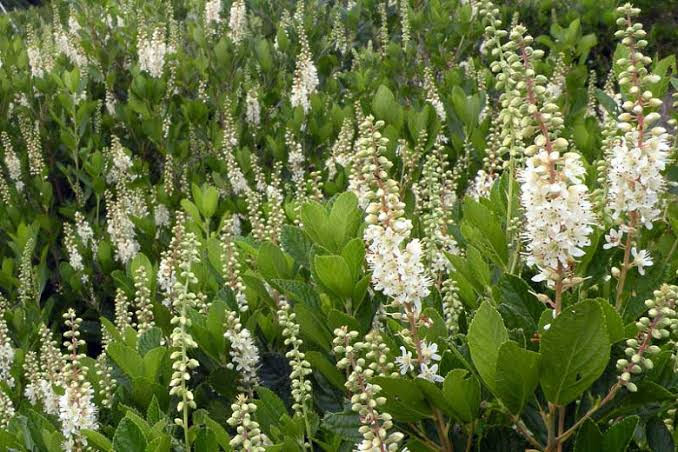
Popularly also known as pepper bush, summersweet really lives up to its name by blooming with plenty of white-scented flowers during summer. It has showy bottlebrush-like flower clusters, which can be up to a foot long, with green leaves that turn golden yellow in fall.
Pro Tip: They grow well in wet areas or even in stagnant water. Plant them in the sun, but make sure to keep the soil moist. If you have a lake garden, you can plant them by the lake.
5. New Jersey Tea
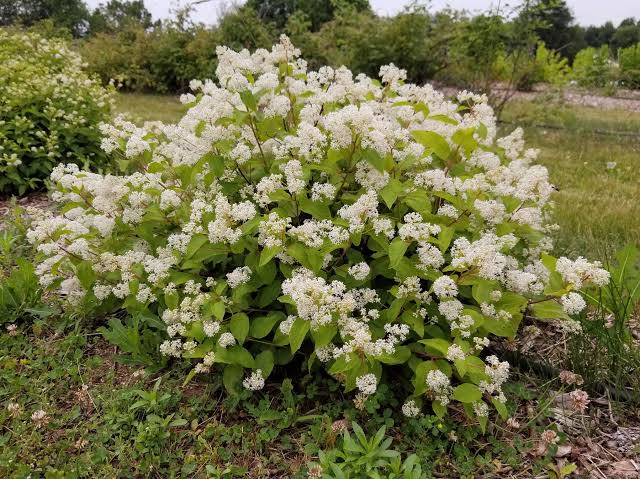
New Jersey Tea is a low-growing, deciduous shrub with a rounded crown and can grow only up to 3 feet. Its leaves can be dried to make tea, hence the name. It Blooms pretty tiny flowers in clusters.
Pro Tip: The most important point to keep in mind is this plant is adaptable to any kind of soil, but it doesn’t tolerate wet soil. Plant it in an area that is very well drained to protect it from rots.
6. Chokeberry
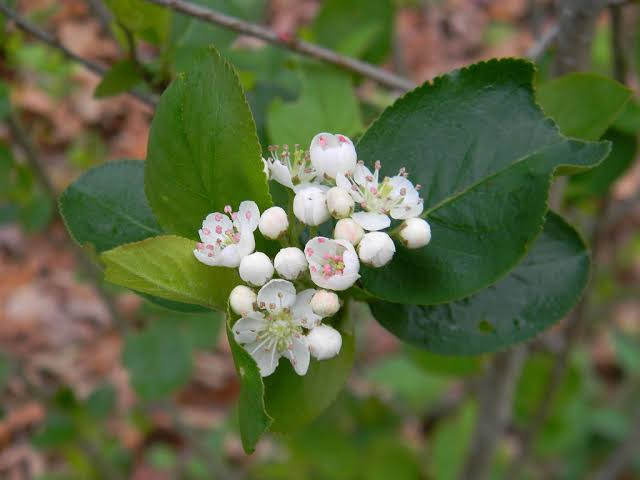
Chokeberry adds colours to your garden all year round. First with its white 5 petal flowers, then with its glossy red berries that show up in late summer and stay through winter. And finally, when its leaves turn pretty red during the fall. The berries are edible and have a sour taste.
Pro Tip: Keep the plant fresh by thinning out one-third of older stems every few years. To maximize fruit production, keep the soil evenly moist with regular watering.
7. Rose of Sharon
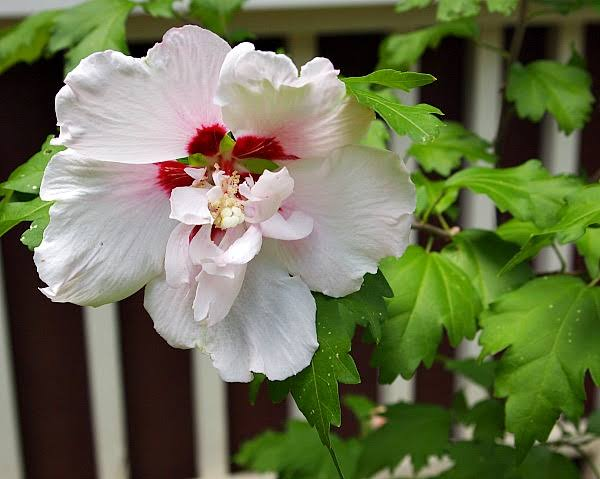
Rose of Sharon is a hibiscus that blooms with its big white flowers of five papery petals from midsummer to frost, bringing colours to your winter garden. It can grow up to 10 feet tall. It is pretty low on maintenance, perfect for new gardeners.
Pro Tip: Prune it before its first display for a showy display of flowers. It does well in most climates and soil but not the extremes. Avoid getting the soil very dry or very wet.
8. Ninebark
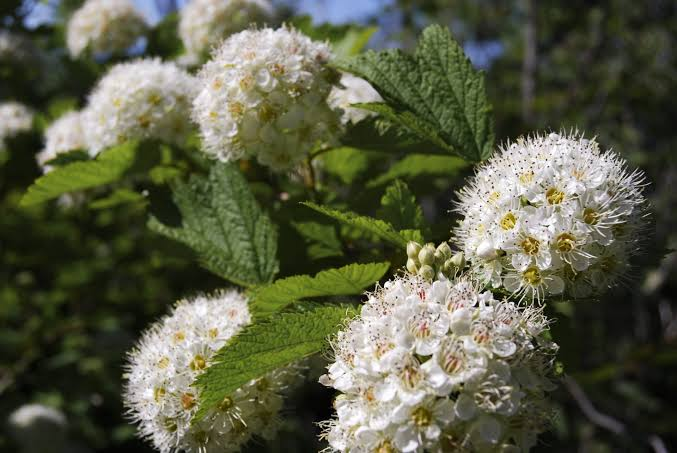
Ninebark is a member of the rose family, and it gets its name from its extraordinary exfoliating bark, which peels thin layers as its branches grow. It bears clusters of white flowers in spring and red fruits in late summer or autumn. It can reach its full growth in just one growing season.
Pro Tip: Ninebark needs ample space to grow because of its huge form. Do regular pruning because of its fast-growing nature so that its beautiful arching branches can get attention.
9. Korean Spice Viburnum
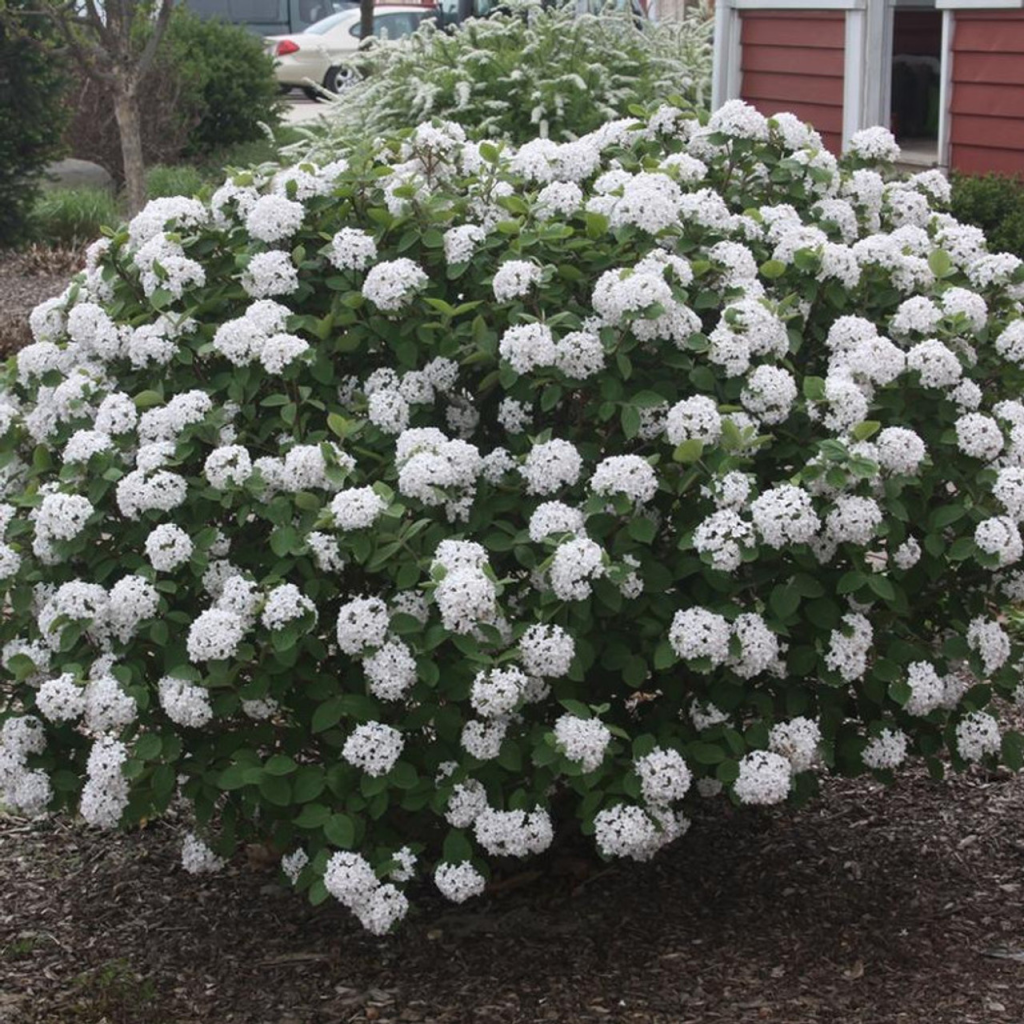
Viburnum has multiple stems and snowball-like clusters of small, white flowers. The flowers blossoms in spring and summer, and its delicious berry fruits come in fall and winter. They have various varieties, but the Korean one has pink buds that blossom in beautiful white flowers.
Pro Tip: Viburnums do not transfer well after establishing, so the best thing to do is to let them grow in a container until it is well grown, then transfer them to a spacious spot during early spring to give them a season to adjust.
10. Hydrangea
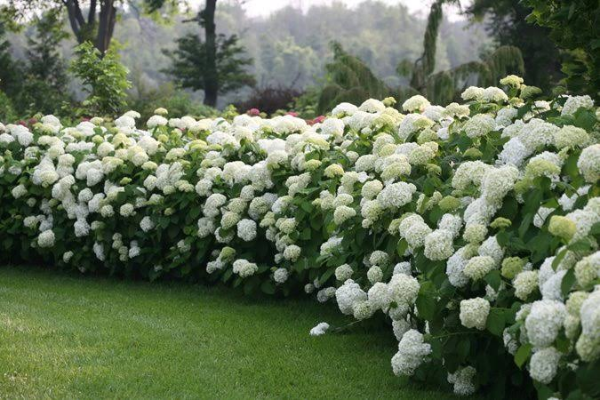
Hydrangea forms clusters of white flowers during summer and stays for two months. The buds open with lime green petals, which turn white when the plant matures, and slowly to light green in late summer. It produces an abundance of bloom without being picky about what type of soil they are planted in.
Pro Tip: This plant needs a lot of water to grow at its best. Water them three times a week because its leaf wilts, and the growth of the flowers will be affected if the soil is dry.
11. Lilac
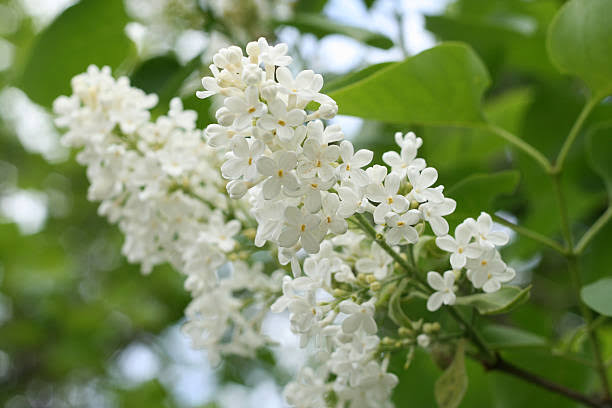
White lilac is a traditional ornamental shrub popular for its stunning flowers and intoxicating aroma. They can be used in a hedge or as a single plant. The showy white flowers bloom on upright pinnacles during spring, which complement the blue-green foliage. They can grow to a massive height of 12-15 feet when left unattended.
Pro Tip: It is a hardy shrub and can grow in the coldest of areas. Plant them near the sitting areas or windows to enjoy the lovely scent of the flower while it flows with the wind.
12. White Rose Shrub
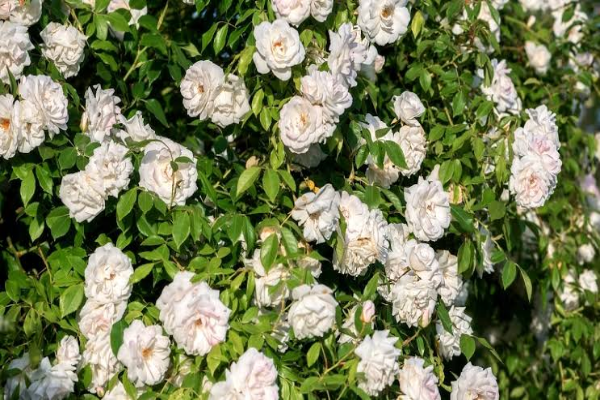
Roses are one of the most cultivated plants due to their extremely beautiful flowers and lovely fragrance. The shrub grows on thin, arched branches that are covered with thorns. White roses typically grow up to a height of three feet when planted in pots.
Pro Tip: If you are planting them in pits, make sure the pot has drainage holes. Just water the plant base, and avoid watering the leaves and flowers as they catch the disease.
13. Laurel Cherry
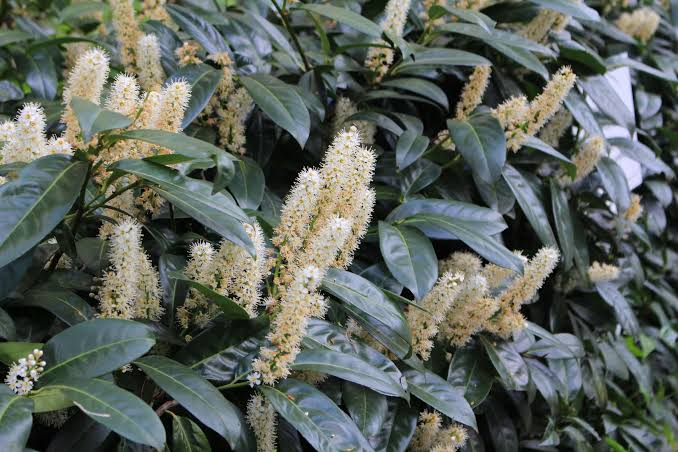
Laurel cherry is popular for its vibrant display during all four seasons. In midsummer, the plant explodes with flower stalks with tiny, plum-scented blooms. It has dark green foliage, which contrasts with the clusters of deep red cherry-like fruits during fall. The fruit slowly turns black during winter.
Pro Tip: Laurel Cherry grows well and adapts to conditions. It2 can also be planted in coastal regions due to its good tolerance to salt spray.
14. Japanese Pieris
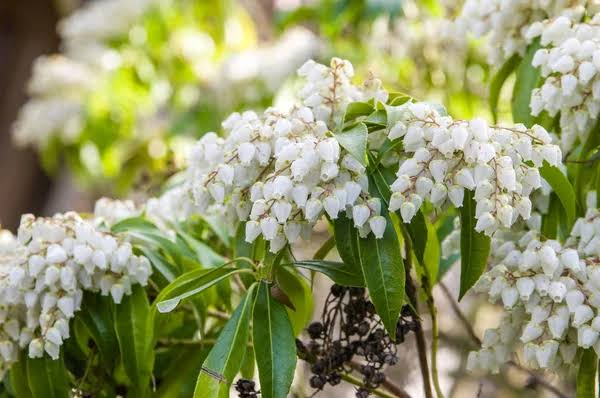
Japanese Pieris is a slow-growing, attractive shrub with tear-shaped small white flowers that bloom in late winter. It has glossy green leaves that turn bronze during fall and winter. The flowers are white or pale pink, and It has a very good fragrance.
Pro Tip: Do not plant them in a windy area; provide them partial shade to protect them from intense heat, wind, or rain.
15. Camellia “white swan”
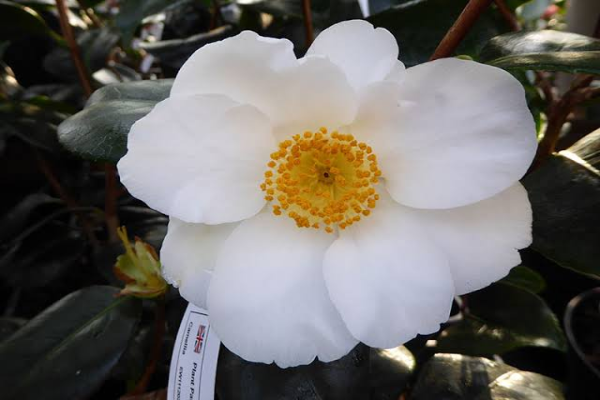
Camellia is a compact, evergreen flowering shrub that blooms with stunning white single flowers that have a yellow centre. It is a perfect plant for containers as it grows only up to 1.5 meters in height. It has ovate leaves, which are glossy and dark green.
Pro Tip: Too much sun can burn your camellia plant. Plant it in a partial sun and partial shade area where the plant gets filtered sunlight.
16. Azaleas
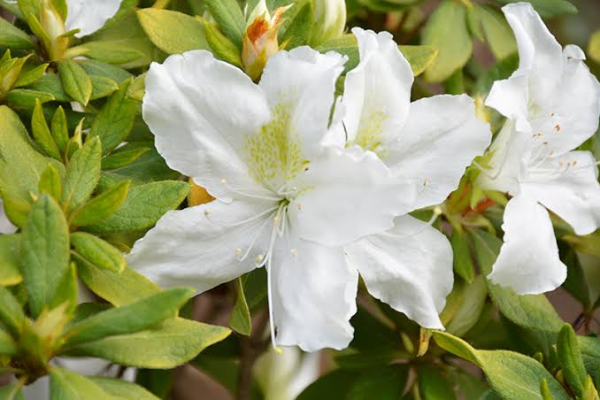
Azaleas come in various types and are a staple plant in gardens everywhere. It generally is a compact plant with small leaves. Its pure white flowers contrast well with its dark green foliage. The trumpet-shaped flowers are lightly scented and work perfectly as a hedge or background plant in any garden.
Pro Tip: White azaleas should be saved from extreme heat. As the temperature can hurt its delicate white petals.
17. Elderberry
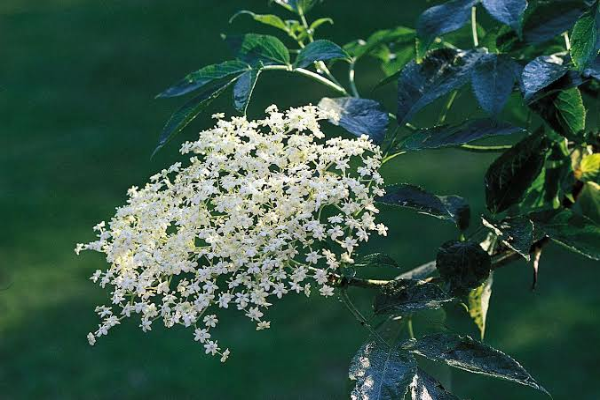
Elderberry is very popular because of its fruit, which is believed to have various medicinal benefits. The berries look very beautiful with their dark purple contrast to the small white flowers, which are lemon-scented. The fruit comes after the plant matures in two to three years.
Pro Tip: Elderberries are shallow-rooted, so make sure to keep the soil moist. It is not tolerant of still water for the same reason. So, avoid over-watering, as it can stimulate rotting.
18. Oleander
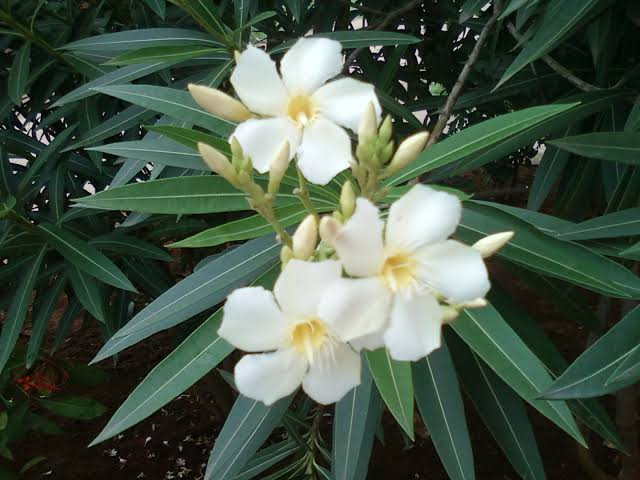
White oleander has lush foliage of broad evergreen leaves and elegant white flowers that bursts during summer in clusters. They are drought resistant and can grow in the warmest of areas. They grow fast and reach a height of 5- 8 feet and can be used in several ways in your garden.
Pro Tip: All parts of oleander plants are highly toxic. They are not kid and pet friendly, so keep kids away from this plant or avoid planting oleander altogether.
19. Spiraea
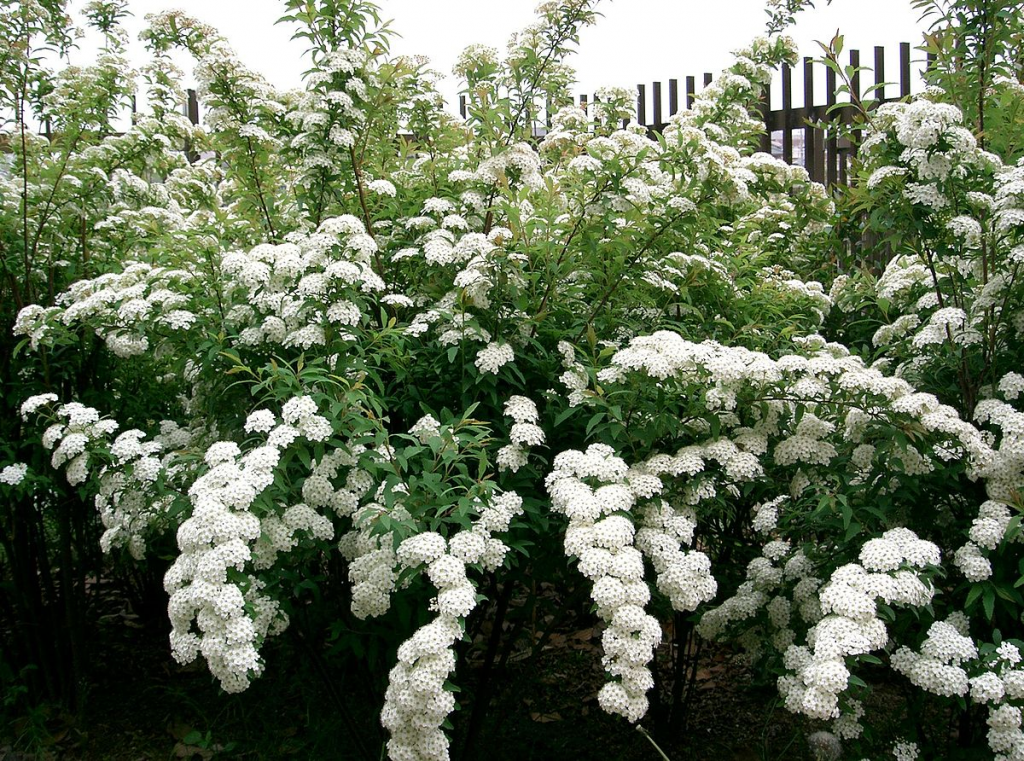
Spirea is a fast-growing shrub, and some of its traditional varieties have been garden favourites for several years. They look best when grown to full size and kept unpruned. It has delicate, lacy flowers that bloom in abundance for more than a single season. It has finely toothed green leaves that put on a show during fall.
Pro Tip: They can be planted near each other for an extensive look, but make sure to leave some space for them to breathe and grow.
20. White Hibiscus
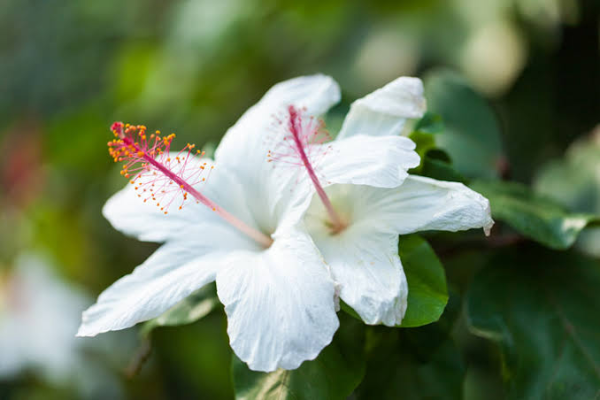
Hibiscus is a flowering plant that displays flowers all year round and hence is extremely ornamental. The flowers are large with five petals, and the ovate leaves are dark green. Though it is easy to maintain, keep checking foliage and blooms regularly for disease or rots, and it should be treated immediately with pesticides.
Pro Tip: Do not water your hibiscus plant under direct sunlight. Because the water will evaporate before the plant can absorb it, do it early in the morning or later in the evening.
21. Pearlbush
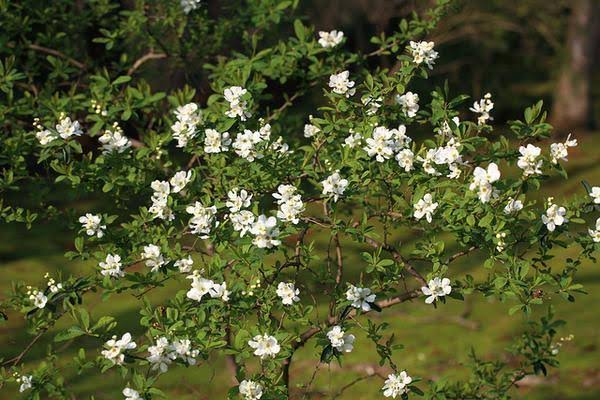
Pearlbush is an easy-to-grow, evergreen, deciduous shrub that grows flower buds that look like white pearls. The flowers show a dramatic display that sometimes covers the pale green leaves under them. The leaves turn yellow and orange after the flowering season to make your garden look beautiful all year round.
Pro Tip: Pearlbush produces flowers on old growth if the plant is pruned after flowering. Plant them in a slightly acidic, well-draining soil for healthy growth.
22. Dwarf Deutzia
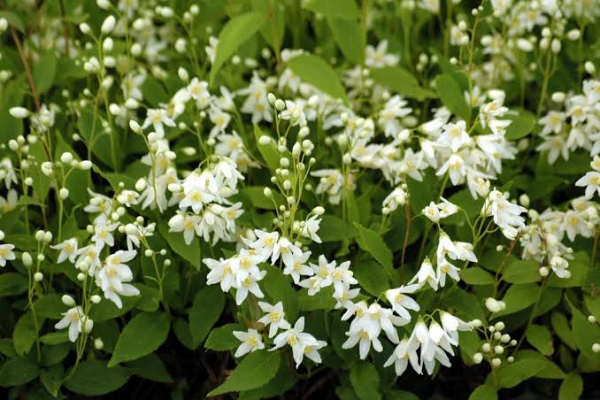
Dwarf Deutzia is a shrub but works perfectly well as a ground cover because it is very short in height and is wider than its height. It blooms with small white flowers in big numbers during late spring, which are bell-shaped with a lovely fragrance. The leaves turn a shade of attractive burgundy during fall.
Pro Tip: Its branches are short-lived, so it needs regular pruning to take out the dead ones. Plant them in cooler months to prevent transplant shock from extreme heat.
Final Thoughts
All in all, you can never go wrong with white. Choose among these stunning white flowering shrubs according to your preference of height, flowers, leaves, and area. These tips will help you to keep your plants healthy. Most of these shrubs are pretty low on maintenance and do not take much of your time.
Buy your favourite white flowering plants in small sizes and then transfer them to your garden soil. Some of these white flowering shrubs can also be planted indoors in pots and containers.
The beauty of white in your green garden looks extraordinary, and its fragrance will add a calming vibe to your personal space. Add white flowering shrubs to your garden design, and you will never stop being amazed by the beauty of it!

